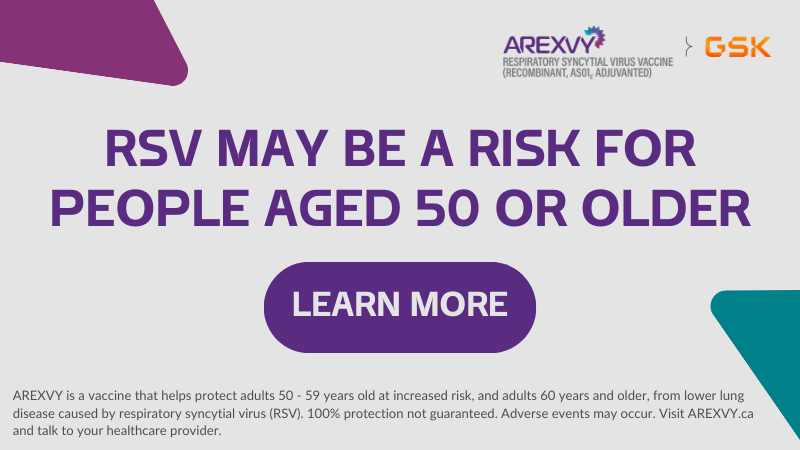The Facts
Panic disorder is a type of anxiety disorder. People with this condition may become anxious to the extent that their feelings interfere with daily life. While most people have experienced a panic attack brought on by particular events or situations, the attacks in panic disorder often develop suddenly and for no apparent reason.
Panic disorder affects about 4% of Canadians, and is twice as common in women as in men. The disorder can appear at any age, but it most commonly appears in young adults.
The risk of developing a panic disorder is increased if there is a family history of panic attacks or disorders, a history of abuse, the experience of a traumatic event, the experience of high levels of stress, and the need to adapt to significant changes in your life.
Causes
The exact cause of panic disorder is not entirely understood. However, researchers believe that panic disorder may be due to chemical imbalances in the brain. Panic disorder also tends to run in families, so there is likely a strong genetic connection. Excessive stress and trauma may also be linked to the development of panic disorder.
Certain medical conditions, such as an overactive thyroid (i.e., hyperthyroidism) and certain heart problems, can have the same symptoms as panic attacks. If you are having panic attacks, you should also be examined for other medical conditions.
Things that may trigger a panic attack include:
- drinking large amounts of alcohol
- drinking excessive amounts of caffeine (e.g., coffee, tea, colas)
- taking stimulants or cocaine
- taking or suddenly stopping taking certain prescription medications
Symptoms and Complications
Panic attacks occur with the sudden appearance or occurrence of at least 4 of the following symptoms:
- chest pain or discomfort
- choking
- dizziness, or feeling faint or unsteady
- fear of dying
- fear of losing control
- feelings of choking
- feelings of not being part of your environment
- flushing or chills
- nausea, stomach ache, or diarrhea
- numbness or tingling
- racing heart
- sweating
- trembling or shaking
- trouble breathing
Panic attacks do not usually last longer than 10 minutes. However, since the symptoms affect the lungs, heart, and other important organs, a person might worry that they are having a serious medical problem that requires emergency medical treatment. However, the panic attack is usually over by the time the doctor sees the person who has had the attack.
Since panic attacks are unpredictable, a person often worries about having another attack. If a person starts to avoid the places where they had previous panic attacks, they may develop a condition called agoraphobia. This type of anxiety disorder causes a person to avoid many places (including places with many people) and may lead them to become housebound.
Making the Diagnosis
Your doctor will diagnose panic disorder based on symptoms, family history, and a physical examination. Your doctor will also rule out any other medical causes before making the diagnosis.
In order to be diagnosed with panic disorder, people must have recurrent and unexpected panic attacks plus at least 1 of the following symptoms for 1 month or more:
- constantly fearing that they will have more attacks
- changing behavior due to the panic attacks (e.g., avoiding situations that may provoke an attack)
Treatment and Prevention
The treatment of panic disorder usually involves a combination of medications and behavioural or cognitive therapy. The goals of treatment are to reduce the number and frequency of panic attacks and improve your quality of life.
The most commonly used medications for treating panic disorder include:
- selective serotonin re-uptake inhibitors (SSRIs) such as paroxetine*
- serotonin norepinephrine re-uptake inhibitors (SNRIs) such as venlafaxine
- tricyclic antidepressants (TCAs) such as imipramine
- monoamine oxidase inhibitors (MAOIs) such as phenelzine
- anti-anxiety medications, including benzodiazepines such as lorazepam
Your doctor may also recommend behavioural therapy such as exposure or relaxation therapy to help reduce fear and anxiety. In exposure therapy, you are slowly exposed to the same situation that triggers panic attacks until fear and anxiety are reduced to a tolerable level or are eliminated. In relaxation therapy, you are provided with techniques to help you relax in situations that have previously caused panic attacks.
Cognitive therapy (psychotherapy) may also be recommended. Cognitive therapy attempts to change your thought patterns by helping you analyze your reactions to panic attack triggers.
*All medications have both common (generic) and brand names. The brand name is what a specific manufacturer calls the product (e.g., Tylenol®). The common name is the medical name for the medication (e.g., acetaminophen). A medication may have many brand names, but only one common name. This article lists medications by their common names. For information on a given medication, check our Drug Information database. For more information on brand names, speak with your doctor or pharmacist.
All material copyright MediResource Inc. 1996 – 2025. Terms and conditions of use. The contents herein are for informational purposes only. Always seek the advice of your physician or other qualified health provider with any questions you may have regarding a medical condition. Source: www.medbroadcast.com/condition/getcondition/Panic-Disorder



